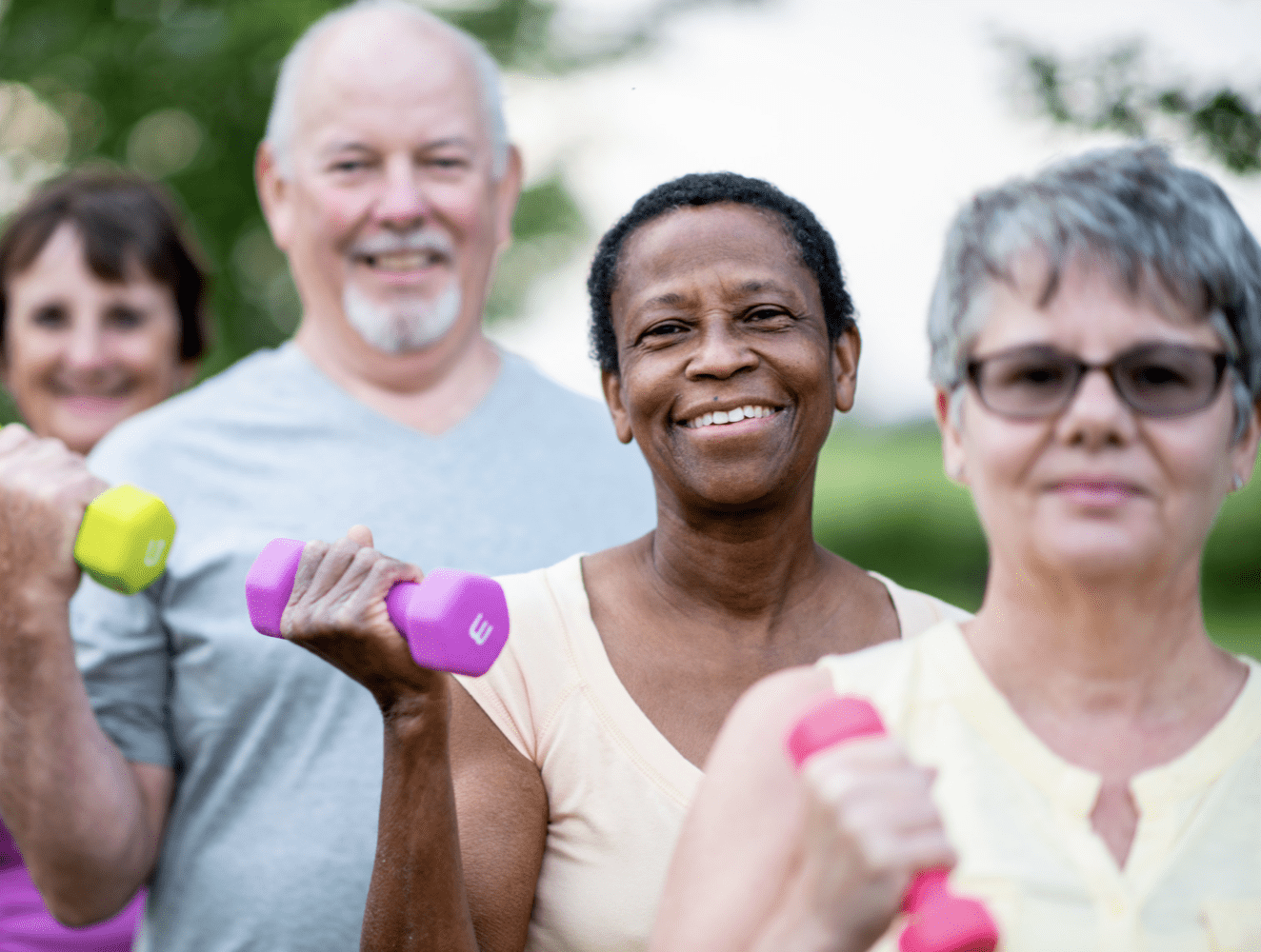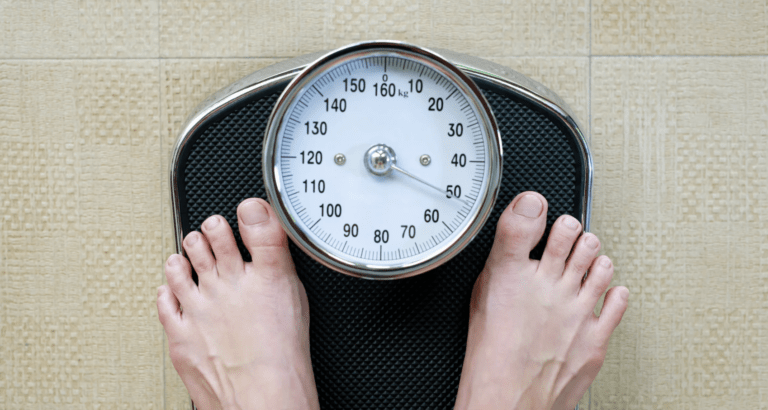- Breakthrough For Ehlers Danlos Syndrome and Endometriosis - 13 March 2025
- Does EDS get worse as you age? - 20 February 2025
- Can Ehlers Danlos Syndrome Cause Weight Gain/Loss? - 18 February 2025
When it comes to the topic of Fibromyalgia and exercise, there is an abundance of research showing exercise to be extremely beneficial when it comes to managing pain. However, for many with Fibromyalgia, exercise may seem completely counterproductive. After all, you really don’t need to look very far to find people who have tried to exercise but have then experienced one of the biggest pain flare-ups of their life, as a direct result of exercising.
So, why is exercise held in such high esteem, especially when there are so many people who seem to have such negative reactions to it?
Why can some people with Fibromyalgia seem to get away with exercising, yet others end up in bed for a week with a fibromyalgia flare-up?
If you are one of the many sufferers of Fibromyalgia from around the world, you’ve probably asked yourself the question “should I exercise when I have Fibromyalgia?”
The available research and guidelines do say yes to this question, but is it really that simple?
In this article, let’s dive into the top of exercising with Fibromyalgia, and take a look at how people often get it wrong, and what you need to actually be focusing on when exercising with Fibromyalgia.
This article covers:
ToggleDoes exercise help with Fibromyalgia?
There is no doubt that you will have been told by friends and family that exercising can help with your Fibromyalgia. Whilst most of the time this is meant as an honest way of trying to help, nonetheless, it can often be very unsolicited advice that leaves you feeling down, as you have likely already tried exercise, all to no avail. There are reasons why people with fibromyalgia struggle with exercise, this is despite it being one of the most effective treatments for chronic pain.
But first, before we look at why people struggle with exercise, what does the research actually say about exercising with Fibromyalgia?
Research does support the idea that aerobic and strength training helps not only improve physical fitness and function, but also reduces the symptoms of fibromyalgia, whilst also improving quality of life. There are also numerous other reasons to exercise when you have fibromyalgia, such as the fact that it has largely beneficial effects on symptoms of depression, which if you are in constant pain, you will very likely have. Another study found that for those with Fibromyalgia who did take part in exercise, it significantly improved pain catastrophizing, sleep, and even anxiety.
However, not all exercise is created equal. The studies above were performed using low to moderate intensity. But, it’s important to remember, that exercise is a human construct. It’s unlikely our ancestors put aside an hour a day to exercise when their entire lives were focused on hunting and movement. Simply reframing exercise as movement, can completely change the narrative around fibromyalgia and exercise, and in some instances, actually make it enjoyable. Exercising doesn’t mean you have to go to the gym and hit the treadmill, it simply means moving.
Many people with Fibromyalgia have found this to be true when engaging in movements such as Tai Chi, a low-intensity form of self-defence. In fact, one study found that yang-style Tai Chi was one of the most effective forms of exercise when it came to Fibromyalgia, producing results fairly quickly, with very limited pushback or side effects.
Whist all of these things sound and look great on paper, it still doesn’t change the fact that there are millions of people with fibromyalgia, who end up with a flare-up from trying these exercises.
But, why is this?
Fibromyalgia Flare ups
When people with Fibromyalgia try to exercise, they can often get pushed into the Fibro Flare box, which we sometimes affectionally call here at The Fibro Guy “the Sh*t Box”.
Think of it like this. Everyone on the planet, Fibro or not, has an exposure limit for stress. This is where the brain and body essentially put you into protection mode to keep you safe from actual or perceived, danger or damage. With Fibromyalgia, we became more sensitised to stressors: physical stressors like exercise or lack of good quality sleep, psychological stressors such as dealing with a death in the family, or social stressors such as a 40-hour work week or a global pandemic!
For those with Fibromyalgia, our exposure limit to these stressors is greatly reduced, which means that it does not take a high degree of these stressors to put us into a flare up. The important thing to keep in mind here is that when the brain senses danger, it has a brilliant little protection method to ensure that you immediately start limiting that stressor: we call this pain.
Let’s have an example of how the Sh*t box works;
June has Fibromyalgia and currently works 39 hours per week. June starts to struggle with the work week, and often finds by the time Thursday rolls around, she is in so much pain that she is literally limping into the next work week. June has tried for 6 months now to just push through and keep working, however, one day, by the time Thursday comes, she has a huge flare-up of pain and has to call in sick on Friday. This is June going over her exposure to stress limit.
After a week, June’s pain is back down to her normal baseline and she goes back to work, unfortunately, she gets hit with another huge flare-up. June recovers and has a back-to-work meeting with her boss, where it is agreed that she can drop her hours down to 20hrs per week.
June goes back to work at reduced hours and everything is much better. After 2 weeks, June is really starting to enjoy work as it’s not so physically and mentally demanding anymore. However, as brains often do, June’s exposure limit drop and one day June goes into work and is hit with another huge pain flare-up. June rests for a week and then goes back to work, but 20hrs per week feels just like 39.
After another back-to-work meeting with her boss, June agrees to only do 10hrs per week and off she goes back to work, all whilst staying under her exposure limit.
For a little, while everything seems fine, that is until she has another huge pain flare-up. Over time as the exposure line drops more and more, June can deal with less and less stress, until eventually, she goes into the Flare-up Box.
In the Sh*t box, yes she is in pain and she is still tired, but as long as she doesn’t try to push herself out of it, she will avoid any major flare-ups. This is where most people with Fibromyalgia eventually end up, conditioned and forced into the Sh*t box.
Now, keep in mind, that this is not just exclusive to work, it also applies to exercise and just general mobility. Pain is a conditioning tool that absolutely works, and your brain wants nothing more than for you to be safe. So, if you’re doing exercise that your brain deems as dangerous or you are pushing past your exposure line, then you are going to slam down into that Sh*t box.
The Sh*t Box is a concept we came up with when we noticed a repeated cycle in many of our Fibro clients. We actually recorded a Podcast episode going into this concept in a little more depth. Click here to listen to it.
The takeaway here, for those trying to exercise who have Fibromyalgia, is that exercise is a physical stressor. The amount of stress that you as an individual are able to handle at the moment, is unique to you, driven by an incredible amount of variables. Variables we will discuss in this article.
Why is exercising with Fibromyalgia so hard
There are two reasons why exercising with fibromyalgia is so hard and difficult: Sensitisation and exposure limits. However, before we get into that, we need to look at what Fibromyalgia pain actually is. There are three main recognized definitions of pain:
Neuropathic pain:
This is where there is damage to the actual nervous system. Some examples of this are nerve damage after surgery, viral infections, cancer, vascular malformations, alcoholism, neurological conditions such as multiple sclerosis and metabolic conditions such as diabetes.
Nociceptive pain:
This is pain that arises as a direct result of nociception. Within your body, there are no such things as pain receptors. In fact, this outdated idea was first coined back in 1664, and keep in mind, that we were still burning people at the stake back then because we thought they were witches. Luckily, science has progressed a lot since then. We now know that what we once thought were pain receptors, are actually nociceptors.
A nociceptor is a special kind of nerve that detects anything that may be potentially dangerous, So, extremes really, of temperature, chemicals, stretch, pressure, and vibration. The job of nociceptive nerves is to report to the brain about potential danger. That’s it, they don’t tell your brain that you are in pain, they just tell your brain that something may be wrong. Once your brain has this information, it’s up to your brain to decide if producing pain is warranted or not.
Nociception and pain are two completely separate entities and they are not mutually exclusive. You can have nociception and pain, you can have nociception and no pain, and you can have pain without nociception. But when pain is created as a result of nociception, we call this nociceptive pain. An example of nociceptive pain would be stubbing your toe on a coffee table, or any injury really.
Nociplastic pain:
The pain that those with Fibromyalgia experience, in general, and not just from exercises, is what we call “Nociplastic pain“. This is where there is a change in how nociception works. When pain is created, despite no clear evidence of actual or threatened tissue damage causing the activation of nociceptors or evidence for any disease, we call this nociplastic pain. Think of it as a faulty check engine light on your car, that keeps going off even though your engine is fine. This nociplastic pain is when your alarm system for danger and threat keeps going off when it shouldn’t.
So, we mentioned earlier that a reduced stressor exposure limit, is going to cause problems with how people exercise when they have fibromyalgia. But, there is also another issue that can arise to cause even more problems: sensitisation.
As we mentioned above, those with Fibromyalgia suffer from abnormalities in the way that the brain deals with pain. Supraspinal processes have a top-down enhancing effect on nociceptive processing in the brain and spinal cord. This effectively means that those with fibromyalgia may be far more sensitive to noxious stimuli compared to the general population, which likely explains the high prevalence of back pain in the Fibro community. Brains are predictive at the end of the day, and research shows us that when a brain is unsure of the exact movement that causes pain, it will just guess. Meaning that movements that should not be inherently painful can soon become that way. Combine that with a nervous system that reports danger or a threat to tissues, when there isn’t any, and a drop in tolerance to stress, and exercising with Fibromyalgia can seem an almost impossible task.
The Best Exercises for Fibromyalgia
To answer this question, we need to really understand its intent. Because as it stands, an exercise that one person can do with fibromyalgia, is often an exercise that another cant tolerate. If you are looking for a quick fix exercise to dramatically bring down your pain or push you into a full recovery/remission, then I’m sorry to say, that is not how it works. Whilst there may indeed be some form of exercise that most people with Fibromyalgia can tolerate, there are going to be people who feel worse for it.
There are many suggested forms of exercise for Fibro, which all have their own individual benefits.
Here are some of the most common:
- Cardiovascular (Walking, cycling, running, and swimming)
- Strength Training (Weights, circuits)
- Low impact (swimming, pilates, Yoga, Thai Chi)
As we mentioned before though, not everyone is going to have success with these forms of exercise. But, they do seem to be the most tolerated forms of exercise for those with Fibromyalgia.
Here at The Fibro Guy, we don’t even approach the topic of exercise, until we have a good understanding of what issues our clients are facing. And when you work like this, it makes things so much easier. After all, would you rather exercise when your danger alarm system is heightened or turned down: it’s always going to be latter. The video below is a great example of this. We initially saw Kit online. She was practically immobile when we first met her. The slightest use of her body swung her into a flare-up for days. But, focusing on the underlying issues as to why she had Nociplastic pain in the first place, it allowed us to calm those nerves down and increase her stressor exposure limit enough to be able to start exercising and reaping the benefits. These days you can catch her at her Zumba class and hiking the hillside.
But, you’re not here to listen to us talk about our clients, you are here to learn about fibromyalgia and exercise. So let’s take a closer look at these most tolerated exercises.
Tai Chi for Fibromyalgia
We mentioned earlier that Tai Chi was one of the most effective and safest forms of exercise for Fibromyalgia. So, let’s take a closer look at why this potentially is.
Remember when we mentioned earlier that we don’t even start thinking about exercise before we find out the reasons why someone has Nociplastic pain. Well, Tai Chi is a great form of exercise because it allows people to jump straight in, without worrying all too much about the reasons why they are in pain, but still reap benefits from exercise. There have been some brilliant studies done on Tai Chi as an exercise for fibromyalgia and the benefits may surprise you.
Tai Chi is a very graceful form of exercise, it’s slow, elegant, and as far as your brain is concerned it’s a pretty low stressor. This is great for anyone with Fibromyalgia who wants to exercise, as it allows them to take part in exercise without pushing above their stressor exposure limit and causing a huge flare up. The current body of evidence shows Tai Chi to help with increased well-being and improved sleep. Something to also note is that there were no studies that found tai chi worsened a condition.
So, Tai Chi as an exercise for Fibromyalgia looks like a good way to start increasing your stressor tolerance level. If it can help to increase your well-being and improve your sleep, your pain levels will come down, which means your tolerance level to stress will go up.
Strength Training with Fibromyalgia
One of the main forms of exercise most guidelines advocate is strength training and with very good reason. Strength training has unrivalled benefits for both chronic pain and the general population. Strength training is not just about working out your tissue, it’s also about working your nervous system. Whilst you may not see muscle growth initially, this is because neural adaptation is taking place, wherein your brain is getting better at recruiting muscle fibres it already has. Making you feel stronger, which honestly, is a huge benefit in itself.
When you feel stronger, you hold yourself differently, you interact with people differently, and you gain a new sense of ownership over your body. When it comes to fibromyalgia, this is important, as it can often feel like you don’t own it. We get better at the things we do, and the better you get at producing feel-good chemicals from exercise, the easier it is to produce them in general. Interestingly to note, is that the high majority of our clients with Fibromyalgia, often have shoulder blade complaints. This is understandable when you factor in guarding and hunched postures that pain can push us into. So, we do recommend specific shoulder blade exercises for Fibromyalgia, as good shoulder blade positioning can help you stand taller, open your ribs up, and just generally make you feel better!
As a general rule, we use the following when introducing strength training or stretching to a Fibro client:
- Do they understand it?
- Do they enjoy it?
- Is it not overly complicated?
- Is it needed?
- Is the client’s nervous system able to deal with the stress?
If the answer is yes, strength training is in. Bear in mind that it is important to lay the groundwork in the form of education and change the narrative around pain before jumping in at the deep end and picking up a weight.
When we begin a strength training journey there are some common themes which always occur.
Number one is the person gets a sense of achievement. Having not done much for a long time, the sense of pleasure from completing a new movement task can be like a drug. With very good reason, the brain is like a pharmacy and in its cabinet are some of the most potent drugs known to man. The use of movement, strength training or otherwise, helps this mushy pharmacist release those “feel good” chemicals (namely Dopamine and Endorphins) These chemicals give us the feeling of having achieved something and craving it again.
This is why it is so important to address any factors pertinent to YOUR pain before beginning as this process can be just as easily a negative one.
Number 2 is the person will start to notice changes in their body. Weight loss, changing shape, muscles popping up and even muscle soreness will all occur pretty early into the process. Muscle soreness is a weird one. It can be scary to think the pain is being made worse by exercise, but on the other hand, it is an excellent way to prove that although the soreness comes, it goes just as quick. And this can be where the magic truly happens. When you have tangible, physical proof that the body can repair and recover, the associated sensitivity from chronic pain starts to dial down over time and you become much more resilient. Both physically and mentally. After all, a good way to show your brain that your body isn’t damaged is to show it what it can do. Remember earlier when we said that if a brain doesn’t know what movement causes pain, it will just guess? Well actually moving is a good way to for your brain to figure this out.
Number 3 is catching momentum. Once you have experienced a change in your symptoms for the better, the nervous system craves movement. You’ll be itching to move more and actually look forward to exercising. At this stage, the movement has become a tonic and is much more energy-producing than fear-inducing or painful. Again, it all comes down to the narrative and having someone guide you through the process to help address the underlying issue as to why you have Nociplastic pain in the first place.
Swimming as an exercise for fibromyalgia
A Spanish study, of 33 women with fibromyalgia, demonstrated that: “a warm water pool-based exercise program for 12 weeks (2 times/week) led to a positive immediate decrease in the level of pain in female patients with fibromyalgia.” The women involved in the study also reported feeling less depressed and more sociable, as a side benefit of their swimming programme.
Swimming gives someone with Fibromyalgia a chance to exercise without having too much load on their tissues, meaning the alarm system is going to be a lot more forgiving than it normally would be. However, there is one issue with swimming as an exercise for fibro: It’s just not transferable to everyday life. Once you are out of the pool and subject to the same load and gravity that is normally enacted upon you, are you going to be able to deal with that stressor? Unfortunately, there isn’t any research on this so it stays as food for thought.
Exercising outside
One study of 20,000 people, across different ethnicities, work and disabilities, found that just 2 hours spent in nature per week, were substantially more likely to report good health and psychological well-being than those who don’t. Likewise, spending time outdoors may potentially be a large factor contributing to things such as better sleep, less pain, and less catastrophising (great for those with chronic pain conditions like fibromyalgia), and many other benefits that likely come from exposure to both sun and nature. In fact, it almost seems like doing exercises outside compounds the benefits of exercise for those with Fibro. We wrote an article on the topic of Fibromyalgia and outdoor exercises that covers this in more depth.
Exercising with Fibromyalgia and Osteoarthritis
The name Osteoarthritis is somewhat of a misnomer, as “Osteo” means bone,”‘Arth” means joint, and “Itis” means inflammation. And when we realise that Osteoarthritis is a degenerative condition, not an inflammatory one, we can start to see why there is likely so much misinformation around fibromyalgia and osteoarthritis, especially considering it’s not even named correctly!
There is a lot of misinformation around Osteoarthritis, even more around Fibromyalgia, and an absolute abundance around exercise. So, let’s take a look at some studies and start to break down those damaging narratives that you have likely been told or have read.
One study focusing on professional football players found that 92% of football players had at least 1 spinal degenerative condition, but in some cases, more than 6 were found. The interesting thing was that none of them reported any pain. This is a nice study that helps us look at the complexities of pain, as when it comes to chronic pain it isn’t always about the tissue.
There is a ridiculous amount of evidence that shows us that pain is not tightly linked to tissue damage. And when it comes to Osteoarthritis, there should also be evidence of people with severe degeneration shown on a scan, but who feel fine, and vice versa. This study of 113 people found exactly that, a huge disconnect between degeneration and pain. In which they found that the people with less degeneration had more pain, and those with more degeneration had less pain!
As we mentioned earlier, those with Fibromyalgia suffer from abnormalities in the way that the brain deals with pain. Supraspinal processes have a top-down enhancing effect on nociceptive processing in the brain and spinal cord. Studies have begun to suggest that such influences occur in conditions such as fibromyalgia. This means that those who do have Fibromyalgia may be far more sensitive to noxious stimuli compared to the general population. Factoring in changes at the joint, those with Fibromyalgia may be more prone to reacting to these changes by ways of producing pain.
There have been a few studies that have looked into how Fibromyalgia may affect Osteoarthritis. One such study published in the European Journal of Neuroscience, measured brainwaves in response to short painful laser pulses on the skin of patients suffering from osteoarthritic and fibromyalgia pain, as well as test subjects who had no underlying pain. Scientists discovered that the insula cortex part of the brain increased its activity when expecting a painful pulse, as it predicts the extent and intensity of the patients’ own chronic pain.
It is important to keep in mind, that increased activity in this brain area has been linked to a number of phenomena, including body perception and emotional processing, which might explain the greater pain perception in some patients.
In essence, there are a lot of factors that come with fibromyalgia that can make osteoarthritis worse, when compared to individuals without it. One such factor is sleep disturbances. It is well documented that with sleep disturbances and lack of sleep, comes an increase in pain. For those with Fibromyalgia, getting a good, restful night’s sleep can be somewhat of a challenge due to pain. Meaning that it has the potential to create a breeding ground for worsening the symptoms of not just fibromyalgia pain, but also the pain of Osteoarthritis.
The take away though, is that changes and sensitisations seem to be the pain driving forces of osteoarthritis. While you may worry that exercising with osteoarthritis (OA) could harm your joints and cause more pain, research shows that people can and should exercise when they have osteoarthritis. In fact, exercise is considered the most effective, non-drug treatment for reducing pain and improving movement in patients with osteoarthritis.
Conclusion
We have looked at some of the many issues that present when it comes to Fibromyalgia and exercise, and we have looked at the research on the different forms of exercise. As it stands with everything we have discussed, most likely the safest and most beneficial form of exercise for those with Fibromyalgia is Tai Chi.
Tai Chi looks to give individuals a form of exercise that can be built upon, without adding too much stress to an already stressed system. As we mentioned earlier, the true key is to find the reasons why you have nociplastic pain in the first place. As it is far easier to exercise with reduced pain levels and higher tolerance.
We hope you enjoyed reading this and we especially hope we managed to answer some of your burning questions.
At the end of the day, pain is multifactorial and comes down to hundreds of interplaying factors. If you would like to learn more about these factors and how they help contribute to the production of pain, we have a free ebook that covers this, which you can find below.
Take it easy and have a great day
— The Fibro Guy team —
Enjoyed Our Blog? Take Your Journey Even Further!
If our blog posts have offered you clarity and support, imagine what a fully equipped, step-by-step course could do for your health and well-being.
The Full Body Fibro Course is your DIY toolkit for movement, pain relief, and empowerment. Packed with science-backed insights, guided exercises, and personalized program-building tools, this course is your roadmap to feeling stronger, moving confidently, and managing pain more effectively.
Looking for more articles on Fibromyalgia?
Read our blog on Fibromyalgia and Osteoarthritis
Read our blog on Fibromyalgia and Costochondritis
Read our blog on Fibromyalgia headaches
Read our blog on Fibromyalgia and Sciatica





